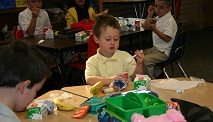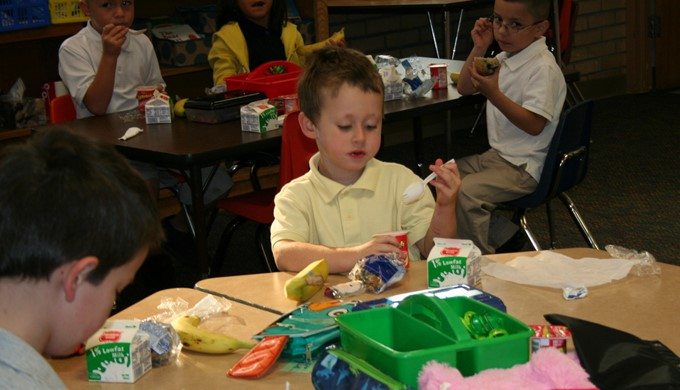Breakfast: A Prerequisite for Learning

By: Rob Bisceglie, CEO Action for Healthy Kids
By now the fact is well established that eating breakfast has countless positive physical and educational outcomes for children. However, not all children have the means to secure a healthy breakfast at home before school or struggle for various reasons to access school breakfast even when it is offered. Innovative solutions to ensuring the kids most in need get to eat breakfast do exist—it’s just a matter of implementing them in schools. As a Together Counts™ Ambassador, I want to use this opportunity to highlight the impact of school breakfast and how you can learn more about and influence your local school’s breakfast program.
National School Breakfast Week (March 2-6) is a good time to learn about alternative school breakfast, which comes in a variety of forms including grab and go, breakfast in the classroom, and breakfast after first period. Though varied in their delivery methods, they all have one thing in common: these programs can drastically increase breakfast participation in schools by making the meal accessible to all students[1], including those who arrive right before the first bell and might otherwise be penalized by missing out on breakfast. Furthermore, these alternative models help to remove any stigma associated with free school breakfast by offering it where students are located or congregate, whether in the classroom, after the bell in the hallway, or near the cafeteria or school entrance.
The link between eating breakfast and students overall achievement, diet, and behavior is supported by many studies. Some of the most significant findings show that kids who eat breakfast have better academic achievement (17.5% higher on math tests) and increased attendance (attend 1.5 more days of school)[2].
Breakfast can be equally about fueling for the day and creating a productive classroom environment that supports learning. Breakfast in the classroom may provide opportunities for teachers to bond with their students before delving into the day’s tasks[3]. Students also may connect with each other in new ways. For example, at Norwood High School in Norwood, OH seniors are running the show, distributing school breakfast at the school entrance and the other students are taking notice. Senior class officer, Cori Miracle, explains, “The students were surprised to see kids handing out breakfast. A few asked me how much it was, and when I told them it was free, they started to come every day. As the week went on, more and more kids came for breakfast.”
Any school can implement an alternative school breakfast program. Start by showing your school’s principal or superintendent the evidence that supports school breakfast. If budget is a barrier, there are a number of breakfast grant opportunities available, including Action for Healthy Kids School Breakfast Grants for Healthy Kids (applications now being accepted for the 2015-2016 school year through May 1, 2015 at www.actionforhealthykids.org/grants).
If too many students in your school are showing up with stomachs that are empty or full of snack foods consumed on the way to school, remember, there are alternatives. With so many resources and support options out there, it’s time to innovate and make alternative school breakfast a reality in your school.
Action for Healthy Kids is the nation’s leading non-profit and largest volunteer network fighting childhood obesity and undernourishment by helping schools become healthier places for kids to learn. Visit www.actionforhealthykids.org for more information.
[1] “10 Reasons to Try Breakfast in the Classroom.” Energize Your Day! Eat School Breakfast. United States Department of Agriculture. Web. Web. 17 Feb. 2015. <http://www.fns.usda.gov/sites/default/files/toolkit_tenreasons.pdf>.
[2] Augustine-Thottungal, Robin, John Kern, Jackie Key, and Becca Sherman. “Ending Childhood Hunger: A Social Impact Analysis.” (2013): 1-8. Deloitte Development LLC and Share Our Strength. Web. <http://www.nokidhungry.org/pdfs/school-breakfast-white-paper.pdf>.
[3] “Breakfast in the Classroom.” Washington, D.C. Food Research and Action Center. Web. Web. 17 Feb. 2015. <http://frac.org/wp-content/uploads/2009/09/universal_classroom_breakfast_fact_sheet.pdf>.

